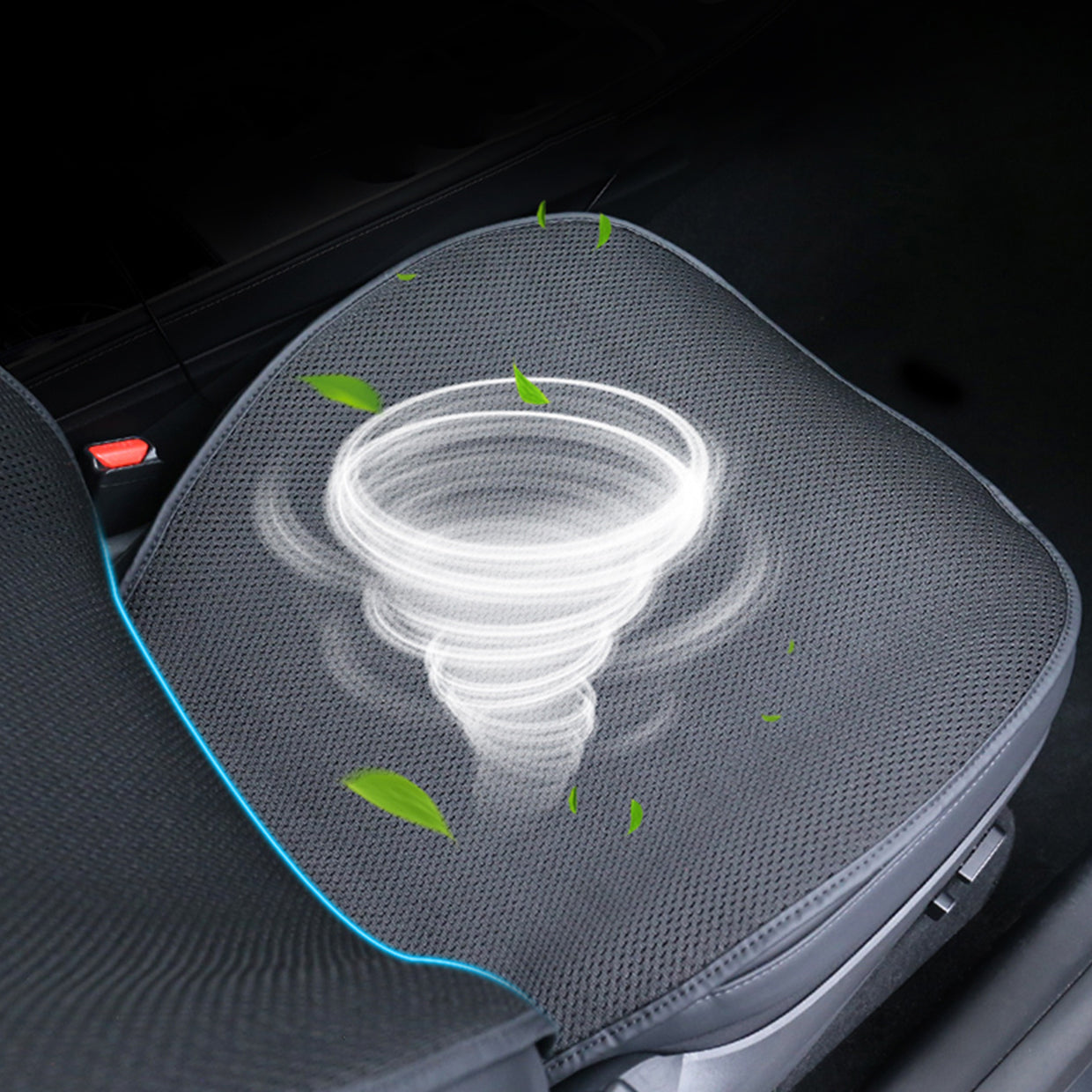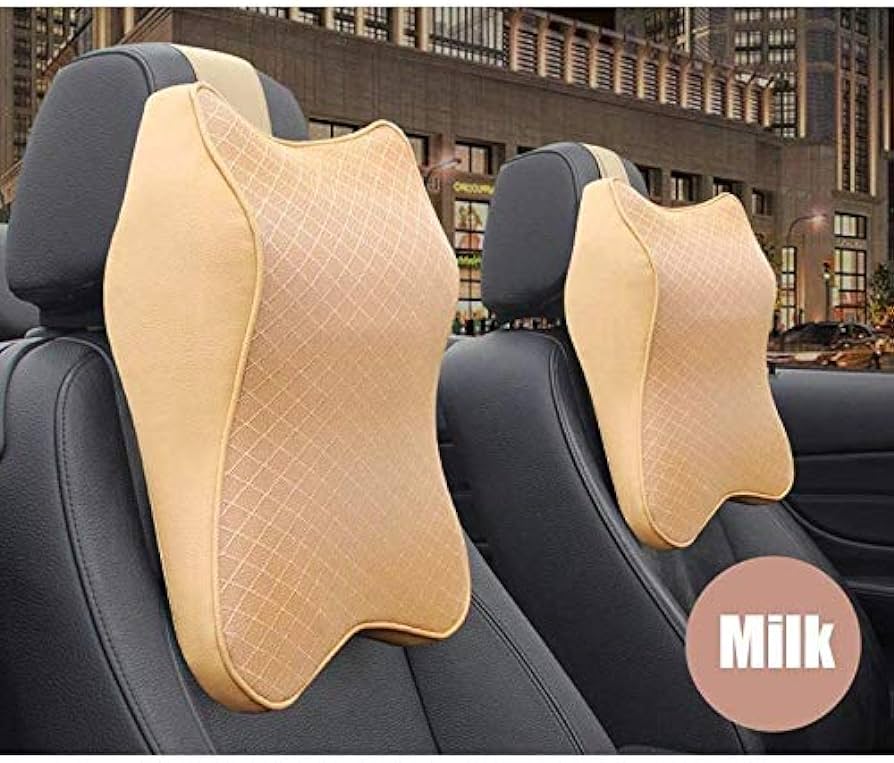Materials for Sustainable Automotive Cushioning The Trend Towards Eco-Friendly Car Interiors
In this fast-paced world, the automotive industry is constantly evolving to meet the demands of consumers and regulations. With environmental concerns becoming increasingly prevalent, car manufacturers are now turning towards eco-friendly materials for their products. This includes the use of recycled, sustainable, and biodegradable materials in car interiors, specifically in cushioning. In this article, we will delve deeper into the reasons behind this trend, the different types of eco-friendly materials used, their benefits, and future prospects.
Eco-Friendly Automotive Cushioning Solutions

The demand for eco-friendly products has been on the rise, with consumers becoming more conscious of their carbon footprint and the impact of their choices on the environment. This has led to a shift towards sustainable and greener alternatives in various industries, including the automotive sector. One area that has seen significant changes is car cushioning, which plays a crucial role in providing comfort and support to passengers.
Traditionally, car cushions were made from non-renewable materials such as petroleum-based foam, which can have a harmful impact on the environment. However, with advancements in technology and a growing focus on sustainability, car manufacturers are now exploring alternative materials that are both eco-friendly and provide the necessary comfort and durability.
Environmental Considerations in Automotive Cushioning Design

When it comes to designing car interiors, environmental considerations are often overlooked in favor of aesthetics and performance. However, with increasing government regulations and consumer demand for sustainable products, it has become imperative for car manufacturers to incorporate eco-friendliness into their design process. This not only reduces their environmental impact but also helps in creating a healthier and more sustainable future.
One of the main environmental considerations in automotive cushioning design is the reduction of waste. With millions of cars produced each year, the amount of waste generated by the automotive sector is staggering. By using eco-friendly materials in car cushioning, manufacturers can reduce the amount of waste sent to landfills and promote a circular economy.
Innovative Materials for Greener Car Cushions

The use of eco-friendly materials in car cushioning has given rise to innovative solutions that not only have a lower environmental impact but also offer unique properties. Let's take a look at some of the most commonly used materials in eco-friendly automotive cushioning.
Recycled Materials
Recycling is an essential aspect of sustainability, and it has become a crucial part of the automotive industry. With millions of cars reaching the end of their life cycle each year, there is a vast potential to reuse and repurpose materials from these vehicles. Some common examples of recycled materials used in car cushioning include plastic bottles, metal cans, and old car parts.
Apart from reducing waste, using recycled materials also helps in conserving natural resources. For instance, the production of one ton of steel from recycled scrap saves 1.5 tons of iron ore, 0.5 tons of coal, and 40% of the water required for primary steel production. Additionally, recycled materials also have a lower carbon footprint as they require less energy to produce than virgin materials.
Sustainable Materials
Sustainable materials are those that are made from renewable resources and can be replenished over time. These materials have gained popularity in recent years due to their low environmental impact and contribution towards a greener future. Some commonly used sustainable materials in car cushioning include bamboo, cork, and soy-based foam.
Bamboo, in particular, has emerged as a popular choice due to its strength, durability, and fast growth rate. It can be harvested without causing any harm to the plant and has a high weight-bearing capacity, making it ideal for use in car cushioning. Similarly, cork is a versatile material that is lightweight, water-resistant, and offers excellent insulation properties, making it an excellent choice for car interiors.
Biodegradable Materials
Biodegradable materials are those that can break down naturally over time, usually through the actions of microorganisms. These materials are often used in disposable products and packaging, but they have also found their way into car cushioning. Some examples of biodegradable materials used in car interiors include natural latex foam, which is derived from rubber trees, and cellulose-based fabrics such as lyocell and modal.
The use of biodegradable materials in car cushioning not only reduces the environmental impact during production but also at the end of their life cycle. As these materials decompose, they release nutrients back into the soil, promoting a sustainable ecosystem.
Life Cycle Assessment of Automotive Cushioning Materials

A life cycle assessment (LCA) is a valuable tool that helps evaluate the environmental impact of a product throughout its entire life cycle - from raw material extraction to disposal. LCAs of different automotive cushioning materials have shown that eco-friendly alternatives have a lower environmental impact than traditional materials.
For instance, a study conducted by Ford Motor Company found that using soy-based foam in seat cushions resulted in a 61% reduction in energy consumption, a 36% reduction in global warming potential, and a 23% reduction in acidification potential compared to petroleum-based foam. Similarly, a life cycle analysis of bamboo showed that it has a lower carbon footprint and water consumption compared to other materials used in car interiors.
Apart from reducing environmental impact, using eco-friendly materials can also have a positive effect on human health. Traditional car cushioning materials contain harmful chemicals such as flame retardants and volatile organic compounds (VOCs), which can cause respiratory problems and skin irritations. Using eco-friendly materials eliminates the need for these chemicals, creating a healthier environment for passengers.
Comfort and Durability of Eco-Friendly Automotive Cushions

One concern with using alternative materials in car cushioning is whether they can match the comfort and durability of traditional materials. After all, no one wants to sacrifice comfort for sustainability. However, advancements in technology have allowed manufacturers to create eco-friendly materials that not only provide the necessary support but also offer additional benefits.
For instance, soy-based foam has been found to be more resilient and durable than petroleum-based foam, making it a suitable choice for long-lasting car cushions. Bamboo, on the other hand, has natural antimicrobial properties, making it resistant to mold and mildew, which can cause unpleasant odors in car interiors. Moreover, sustainable and biodegradable materials are known to be hypoallergenic, making them an excellent option for people with allergies or sensitivities.
Cost-Effective Sustainable Automotive Cushioning
One might assume that using eco-friendly materials in car cushioning would significantly increase the cost of production. However, studies have shown that this is not always the case. In fact, in some cases, using alternative materials can result in cost savings for manufacturers.
For instance, Ford Motor Company found that using soy-based foam was not only more environmentally friendly but also resulted in a 20% cost reduction compared to petroleum-based foam. Similarly, the use of recycled materials can decrease production costs as they require less energy and resources to produce. Moreover, with advancements in technology and increased demand, the cost of sustainable materials is expected to decrease, making them a more feasible option for car manufacturers.
Government Regulations and Standards for Automotive Cushioning
Government regulations play a significant role in driving the shift towards eco-friendly materials in car cushioning. As countries around the world aim to reduce their carbon footprint and promote sustainable development, stricter regulations are being imposed on the automotive industry.
For instance, in Europe, the end-of-life vehicles (ELV) directive sets targets for the reuse, recycling, and recovery of vehicles, including their components, such as car cushioning. Similarly, the Restriction of Hazardous Substances (RoHS) directive restricts the use of hazardous substances in electronic components, which are often found in car cushions.
Apart from regulations, various organizations have also set standards for eco-friendly materials used in car interiors. For instance, the Forest Stewardship Council (FSC) provides a certification program for sustainable wood and paper products, including bamboo and cork. The Global Organic Textile Standard (GOTS) certifies organic textile products, ensuring they are made from natural and biodegradable materials.
Future Prospects for Eco-Friendly Automotive Cushioning
The demand for eco-friendly products is only expected to increase in the coming years, and the automotive industry is no exception. As technology advances and more research is conducted on alternative materials, we can expect to see even more innovative solutions in car cushioning.
Some manufacturers are already experimenting with materials such as pineapple leaves, mushroom-based foam, and even apple peel leather. These materials not only offer eco-friendliness but also provide unique properties such as water-resistance and fire-retardancy. Moreover, advancements in recycling technology are making it possible to produce high-quality recycled materials that can match the performance of virgin materials.
One area that still requires further research and development is the end-of-life management of car cushioning. While many eco-friendly materials are compostable or recyclable, there are challenges in separating them from other materials in the recycling process. However, with increased awareness and investment, we can expect to see more efficient and sustainable solutions for the disposal of car cushioning materials in the future.
Conclusion
The use of eco-friendly materials in car cushioning is a growing trend that offers numerous benefits for both the environment and consumers. By utilizing recycled, sustainable, and biodegradable materials, car manufacturers can reduce their environmental impact, promote a circular economy, and create healthier and more comfortable car interiors. Moreover, with advancements in technology and stricter regulations, the future prospects for eco-friendly automotive cushioning look promising. As consumers, it is essential to support this shift towards sustainability and make conscious decisions when it comes to purchasing cars with greener interiors.



